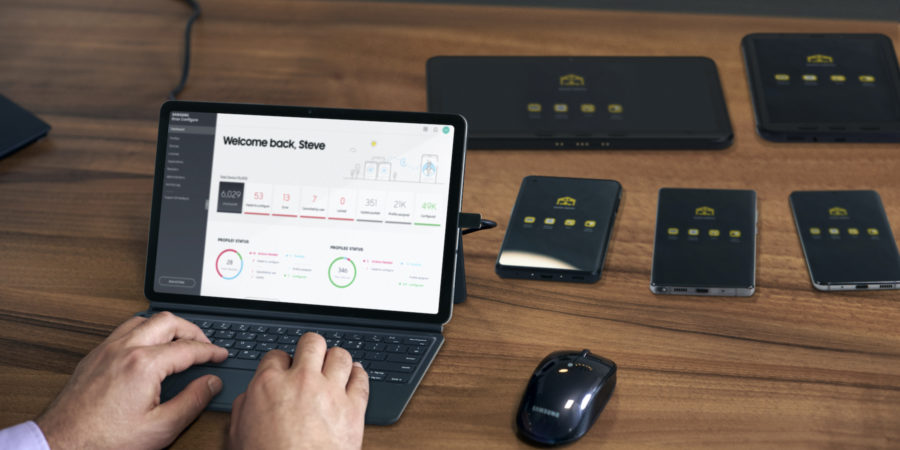For IT managers and administrators, mobile device deployment and configuration can be an involved, time-consuming process. Ensuring that employee smartphones and tablets are secure out-of-the-box is critical, but it’s equally important that users have the right apps at their fingertips and don’t have to spend a lot of time setting up their devices.
A one-to-one device deployment is a time sink for IT, and it leaves more room for error if devices and workers are dealt with inconsistently. But with a management tool like Samsung Knox Configure, devices can be set up automatically, giving employees a uniform, secure experience and immediately boosting their productivity.
Automatic device provisioning
Knox Configure is a cloud-based service that enables IT administrators to remotely configure and provision their organization’s mobile devices right out of the box. After setting up device policies and profiles, IT can bulk-enroll hundreds or thousands of devices instantly.
Knox Configure isn’t intended to replace your mobile device management (MDM), but rather automate all the deployment steps you’re used to handling manually.
Get your ultimate guide to Knox Configure
Learn how to optimize mobile devices for your unique business needs using Samsung Knox Configure. Download Now
During initial device setup, IT can adjust all kinds of settings, from app permissions to connectivity. Knox Configure identifies each device by its IMEI or serial number, giving admins granular control over device configuration, and ensuring workers have the appropriate level of access to company files and systems. The process is similar to creating a gold standard image for a PC before issuing it to an employee.
Customized for your business needs
By taking full control of the configuration process for smartphones, tablets and wearables, you can customize what each employee sees when they first turn on their new device. You can skip the setup screens from Google, Samsung and your phone carrier and replace them with a fully customized sign-on process. This means that IT admins have a unique option to remove unwanted setup steps.
Knox Configure lets you offer a personal touch by featuring your brand on your devices’ startup screen and the phone wallpaper. As you preinstall business apps over-the-air, you can also add shortcuts on the home screen, such as a shortcut to your business’ online homepage.
For an even more tailored UX, Knox Configure allows you to transform devices into dedicated business tools, like a customer kiosk, that run a single app with locked settings like the volume and power buttons.
Optional factory reset, mandatory enrollment
With Samsung Knox Configure, IT has granular control over device settings and startup, including an option to disable Android’s factory reset option. Knox Configure can set devices to automatically re-enroll after factory reset in the custom configuration created by the IT admin. You can also create a customized startup configuration using predefined profiles and policies for Wi-FI access, near-field communications (NFC) and Bluetooth. This streamlined process removes many of the common pain points for both employees and administrators.
As admins configure your business devices, there’s no more need to access hidden menus and systems. You can rest assured that with each device’s profile predefined, onboard information is always secure, as are your corporate networks. Nothing is left to chance.
Knox Configure makes device customization as easy as eight simple steps. If you’re interested in mobile device management but not sure where to start, check out Samsung’s free guide.






